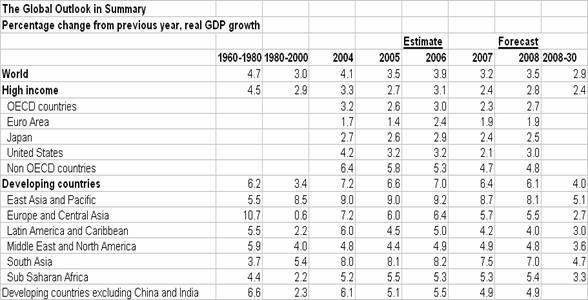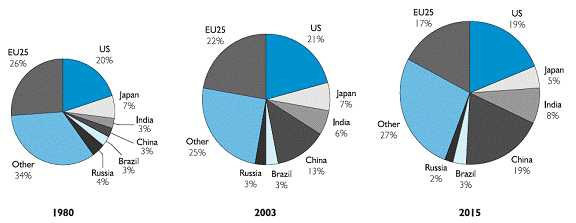Introduction
Critically review (i.e from academic, commercial, governmental and other relevant sources ) to support the view that the process of Globalisation is likely to have the significant impact upon the competitive environment of the mobile communications sector for the near future.
What is Globalisation?
Globalization can be defined as “The growing interdependence of countries worldwide through the increasing volume and variety of cross-border transactions in goods and services and of international capital flows, and also through the more rapid and widespread diffusion of technology” ( the international monetary fund, 1990). Another term for globalization is “the technical revolution or techno globalism.” As cited by (A.Nankervis,45).
Drivers of globalization
The drivers of globalization which cause globalization are related to a particular environment where a business operates. The drivers can be categorized as cost drivers, market drivers, government and economics drivers, and competitive drivers. (A. Nankervis,45).The increased number of customers can reduce the individual costs by obtaining global economies of scale. As market drivers, the globalization can bring the customers all over the world. For instance, the students from all over the world can study a course and obtain a degree from a UK university.
According to John(et al,2011,54), market is a group of customers for specific customers or services that are essentially the same.
The environment refers to what gives organizations their means of survival.
Competitive environment(to define)
The main key features of globalization are increased of the international trade by reducing the barriers. According to the framework of the General Agreement on Tariffs and Trade (GATT), globalization participate in industrialized countries more than the developing ones. It is a financial market that dramatically increased the element of the globalization. (module 4, nature and impacts of globalization, no date) Nowadays people who live the different parts of the world free trade with internationalization in the worldwide. Today growing markets in China and India are providing the future economic prospects and also huge conglomerates from China and India are investing in the UK.
Technology is the significant factor of the production underlying on globalization. The modern knowledge with high-tech industries are the fastest developing sectors in the global economy. The world become Global Village with the spread of internet, email, smartphone, free international calling software like Viber and skype and electronic conferencing.
The opportunities and threat of globalization
Globalization has many positives things like free trade and improve information technology, capital and increase FDI ( foreign development investment). During these years people can live the modernized lifestyle. The successful economic development leads to a better lifestyle because of globalization. Every person increase the income as the employment opportunities. Some workers can work from home as the improving information technology and also better working conditions such as factory.
Globalization is showed as a threat to the world’s cultural diversity. It might slow down the local economies, traditions and languages, for example, Hollywood films are likely successful worldwide than the host country made ones. (negative impacts of globalization, 2014)Additionally, some foreign products are more useful than local ones such as microwave, luxury cars and so on. This is the threat of the local country’s economy as well.
In the late 19th and early 20th centuries, the world trade was growing at 33 percent per year. The pound sterling was the basis of the global economy, and some technologies such as the steam engine, wire phone, and the telegraph were gradually disappearing the planet. Globalization can be increased some threatens such as conflict, war, weapons, and pervasive terrorism. Trade is disrupted and the barriers will go up. The more nationalism emerges, the fear of civilizations will up. Nowadays the terrorism uses the tools of globalization like travel, communication, flow of funds to attack the global economy. (Danie Yergin, 09 Mar 2003)
The mobile communication
Communication is an essential part of the activity of people in their day to day life. The development of mobile technology has significantly changed the standard of life of people around the world, enabling their communication more efficiently and effectively. In fact, mobile technology started taking off the world in the mid-90s. ( Castells (et al,2007). The style, model, and features of a phone all play into the image that we display to the world, becoming a cultural icon in its own terms ( Ling.R, 2009).
Once the internet was introduced to the mobile phone, in 2006 there were about 10% of the internet and 32% of mobile phone users of people in the world. ( Ling.R,2009). The mobile communications market is developed by rapidly changing technology, involving customer demands, and the frequent introduction of new products and services. According to the destructive customer adoption of mobile devices, companies are more convenient than before every industry from the financial services, telecommunication, public sector, healthcare, teaching, manufacturing service for the whole business. ( mobile and wireless communication, 2016)
Development of smartphone
The development of smartphones has become another step in the globalization process. The updated devices have opened up a series of opportunities for all the spheres of social life: business, education, entertainment, and leisure. Since one is able to exchange any information within a few seconds with the help of a smartphone, the speed of the globalization is rapidly increasing. The appearance of this gadget has completely eliminated the problem of distance. Meanwhile, it is hard to define the impact of this invention. On the one hand, the facilitated connection between cooperation partners or educational institutions is an indisputable advantage of the global social engagement. On the other hand, the increased transparency of any market has, consequently, created a more severe competitive environment.
- facts impact upon the competitive environment of mobile communication
- academic
- commercial
- governmental sectors
- Social
Migration
Another important factor that determines the development of globalization is migration. Practice shows that the tendency to shift one’s place of residence is gaining its popularity. The motives of migration can be different: the unfavorable conditions in the home country, the international marriage, the abstract search for a better life. Meanwhile, whatever the reasons for people’s moving to a foreign country are, such transpositions result in the precipitation of the globalization process. One should necessarily note that the migration process is becoming less and less controllable.
Many governments experience severe difficulties in trying to manage the migrant flows entering their countries. As a result, the outcomes of this phenomenon are ambiguous. On the one side, the cultural and traditional exchange is likely to help different nations enlarge their experience and create some new values and innovations. On the other side, the discrepancy in different mentalities might lead to serious conflicts between the migrants and the local residents. Therefore, one might assume that whereas limited migration may be beneficial for both the sides, the uncontrolled flows of migrants are apt to cause disastrous consequences.
Economic growth of the part of the world
In December 2006, the World Bank described approximately for the long-term growth prospects for the world as per the developed countries and the developing economies of different regions as well as the global economy as a whole. They forecast that world economic growth would increase to 3.5% in 2008 and then over 2008 to 2030 would be 2.9% per annum. In the future per capita GDP of developing countries is expected to grow at a higher rate than that of developed economies (see table 2 below).
Table 2: World Bank forecasts of long-term growth prospects. Source: World Bank

The World Bank is estimate that developing countries in the East and Central Asia region will grow up with the highest growth rates. Other organizations, such as the IMF and OECD, have also showed the forecasts for economic growth. In the future, Asia will be expected to have the highest rates of growth compared with other regions.

Note: Areas indicate the size of the global economy
Since 1980, there has been a significant change in the location of world economic activity. A greater proportion of world economic activity is now located in Asia, with China and India undergoing significant economic growth in recent years and a projected increase of global economic output in the future. Twenty years ago just 10% of manufactured goods came from developing and emerging countries whereas by 2020 the figure will be 50%. Developing countries are also increasingly involved in the services sector. The rates of growth in India in the services sector have been particularly significant. At the same time, there has been significant growth in levels of capital flows with countries such as China, India, Brazil, and Russia being significant destinations for foreign investment. ( the risks and opportunities from the globalization, 2007)
Conclusion
In conclusion, one might note that as well as any other social phenomenon, globalization has its benefits and drawbacks. One of its principal advantages is that it enables countries to focus on the production of the goods that are most successful in the particular region and purchase the items that this country lacks. Moreover, globalization strengthens the international market, lets it grow and thus, creates new workplaces and reduces general unemployment rates. Finally, globalization is beneficial not only for the suppliers but for the customers as well.
Thence, a high level of competitiveness leads to the reduction of costs in the global market. However, the disadvantages of the relevant process are likewise significant. First of all, the intention of the developing countries to become a part of the common globalization might lead to numerous environmental problems. Secondly, many prosperous companies face extra challenges due to the unpredictable behavior of the new players in the global market. Furthermore, the uncontrolled flow of people of different origins and nationalities does not only contribute to the common cultural exchange but also facilitates the transmission of various viruses and epidemics.
Nevertheless, one has to admit that further development of the globalization process is inevitable. It is now evident that one cannot eliminate the so-called “drivers” of globalization. Therefore, to avoid potential risks and complications and to benefit from the outcomes of this process, people are to find the regulating tools that will help to keep the following process under control.
References
Module 4, nature and impacts of globalisation, no date.
Negative impacts of globalisation, 2014.
(Danie Yergin) Threats to globalisation in an unstable world.
Alan Nankervis, Yuki Miyamoto ,Ruth Taylor,John Milton –Smith “ Managing Services” Cambridge university press.
Rich Ling, Jonathan Donner(2009) “Mobile communication” , Polity Press ,Cambridge, UK.
Manuel Castells, M ireia Fernandez- Ardevol, Jack inchuan Qiu, Araba Sey (2007)“ Mobile communication and society : A global perspective.”The MTS press ,Cambridge ,Massachusetts, London.England.